

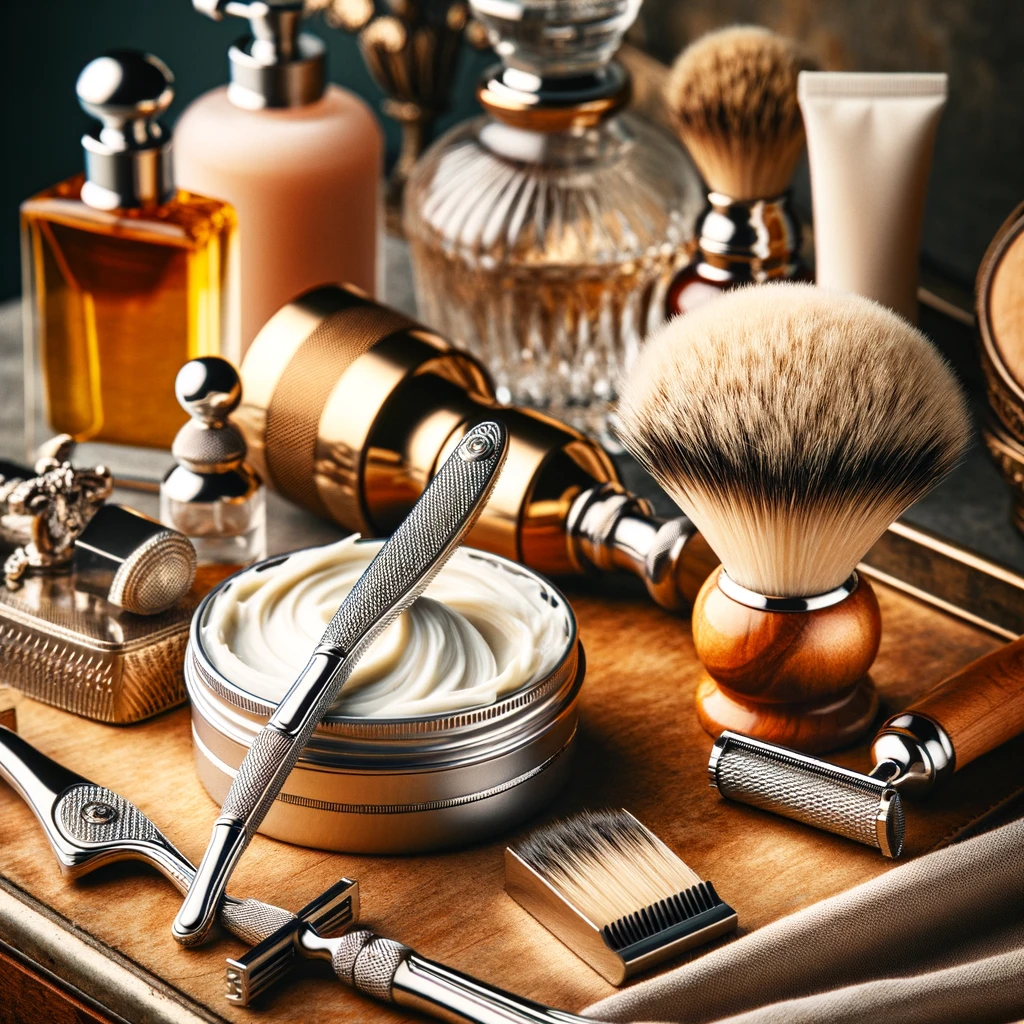
The art of shaving has evolved significantly over the years, transforming from a mere daily chore into a sophisticated ritual that intertwines luxury, personal care, and environmental consciousness. In this intricate dance of blades and skin, a key player has emerged – the Double-Edge (DE) razor. This tool, once a staple in every gentleman’s grooming kit, has seen a revival not just as a nod to tradition, but as a beacon of sustainability and customization in the shaving world.
DE razors, especially those crafted from materials like brass and stainless steel, represent more than just a shaving instrument; they are a statement of eco-conscious living blended seamlessly with personal grooming excellence. The unique possible aspect of these razors lies in their flexibility – the option to use varying numbers of blades. This feature isn’t just a gimmick; it’s a thoughtful response to a diverse range of skin types and shaving preferences.
This article delves into an often overlooked yet crucial aspect of shaving: How does the blade count in a razor influence the shaving experience, particularly for different skin types? Traditional wisdom often limits the conversation to the binary choice of single versus multiple blades. However, we aim to expand this dialogue, exploring how varying blade counts in eco-friendly DE razors cater to the nuanced needs of modern men, who not only seek a close, comfortable shave but also prioritize sustainability and luxury in their personal care choices.
In this exploration, we will unearth insights seldom discussed in the mainstream shaving narrative. We’ll navigate through the historical evolution of razors, understand the science behind different skin types and their interaction with various blade counts, and discern why a multi-blade selection razor could be the epitome of personalized luxury in grooming. This journey is not just about choosing a razor; it’s about embracing an eco-friendly and luxurious grooming experience that resonates with the values of the discerning shaver. Join us as we dissect the intricate relationship between blade count and shaving experience, paving the way for a more informed and environmentally responsible choice in personal grooming.
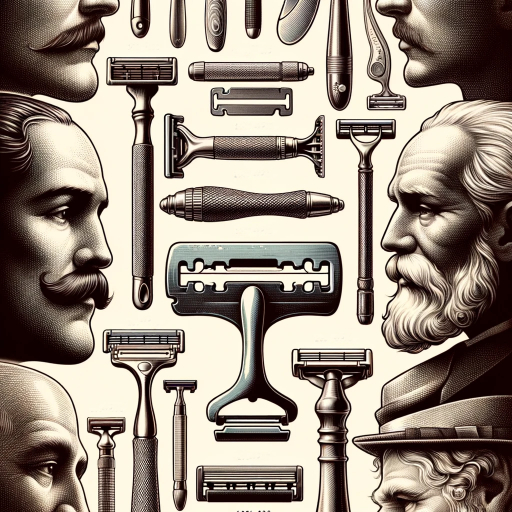
The journey of DE razors is a fascinating tale of innovation, decline, and resurgence. Initially popularized in the early 20th century, these razors were celebrated for their simplicity and effectiveness. However, with the advent of disposable and cartridge razors, DE razors were overshadowed, seemingly confined to the annals of grooming history. In recent years, however, there has been a remarkable revival. This renaissance is not driven by nostalgia alone but by a growing awareness of sustainability and a preference for quality over convenience.
What sets this revival apart is the blend of tradition with modern ecological concerns. Unlike the disposable options that contribute significantly to landfill waste, DE razors offer a more sustainable approach to shaving. They embody a return to basics – a single, sharp blade requiring skill and attention, offering not just a shave but an experience. This resurgence is not a step backward but a leap forward, reconciling the old with the new.
In the context of eco-friendly DE razors, innovation has been key. Modern DE razors have transcended their purely functional heritage to become symbols of eco-conscious grooming. The use of stainless steel, a material celebrated for its durability and recyclability, marks a significant departure from the plastic-dominated world of disposable razors. This choice of material not only reduces environmental impact but also enhances the shaving experience, offering a heft and balance that plastic simply cannot match.
But the innovation doesn’t stop at materials. The design of these razors now often incorporates adjustable features, allowing for a customized shaving experience. This adaptability is particularly important in catering to a variety of skin types and facial hair textures, a consideration often overlooked in the mass-market razor industry. By offering the ability to adjust blade exposure and angle, modern DE razors provide a level of personalization that is both luxurious and practical.
The appeal of these razors extends beyond their functional benefits. They resonate with men who not only seek a superior shave but also wish to align their grooming routine with their values. These men view their choice of razor not just as a tool for personal care but as an expression of their commitment to quality, sustainability, and sophistication. In this way, the humble DE razor has been transformed from a relic of the past into a beacon for the future of grooming.
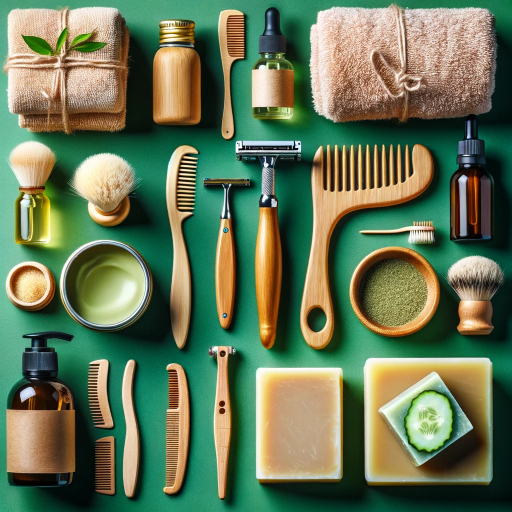
The science of shaving is deeply intertwined with an understanding of various skin types. Each skin type, from the rugged and resilient to the sensitive and prone to irritation, requires a different approach in the shaving routine. The key lies in understanding the unique characteristics of each skin type and how they interact with different blades. For example, thicker, oilier skin may tolerate aggressive shaving with multiple blades, while sensitive skin might benefit from a gentler approach, often provided by a single, sharp blade.
This aspect is particularly relevant for high-income men who not only seek a quality shave but are also increasingly aware of the importance of skincare. The choice of a razor can significantly impact skin health, influencing factors like razor burn, ingrown hairs, and overall skin comfort. The right blade count in a DE razor can mean the difference between a shave that leaves the skin feeling rejuvenated and one that results in discomfort.
Advancements in blade technology have opened up new possibilities in catering to different skin types. High-quality DE razor blades, crafted with precision and from superior materials, offer a closer shave with fewer passes, reducing the risk of irritation. This is particularly important for those with sensitive skin, where minimizing blade contact can prevent redness and bumps.
The geometry of the blade itself is a topic seldom explored but crucial. The angle at which the blade contacts the skin, the sharpness of the edge, and even the spacing between multiple blades can all influence the shaving experience. These factors determine how the blade interacts with the skin and hair, affecting everything from the ease of cutting through coarse facial hair to the likelihood of nicks and cuts.
In the context of eco-friendly and sustainable shaving solutions, the integration of advanced blade technology with DE razors presents a compelling proposition. It bridges the gap between the desire for a luxurious, effective shave and the commitment to eco-conscious grooming practices. This combination is particularly appealing to discerning men, who understand that the quality of their shave is directly linked to the technology behind their razor. By choosing a razor that incorporates the latest in blade technology, they are not only caring for their skin but also making a choice that aligns with their values of quality and sustainability.
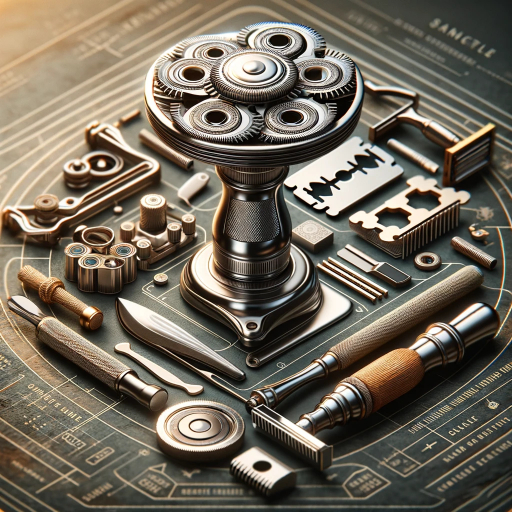
The debate between multi-blade and single-blade razors is a nuanced one, often overshadowed by marketing strategies and brand loyalties. As we delve into this comparison, it’s crucial to consider not just the number of blades but how they interact with different skin types and shaving habits.
Multi-blade razors, such as the Gillette Fusion and Venus Embrace, have been at the forefront of shaving technology for some time. These razors, often endorsed by celebrities, are marketed as offering a closer shave, with each successive blade supposedly cutting the hair a bit closer to the skin. However, an interesting point raised in an article on HowStuffWorks is the lack of comprehensive scientific research affirming that more blades equate to a better shave.
For individuals with coarse, thick hair, multi-blade razors might seem like an effective option, as they can handle such hair types with fewer passes. However, this benefit can be a double-edged sword. Multiple blades increase the chances of skin irritation, nicks, and ingrown hairs, especially if the shaving technique is not properly adjusted. For those with sensitive skin, the aggressive nature of multi-blade razors can exacerbate skin problems.
In contrast, single-blade DE razors offer a different shaving experience. These razors harken back to traditional shaving methods, emphasizing skill and technique over technological gimmicks. The single blade moves across the skin once, reducing the likelihood of irritation caused by multiple blades passing over the same area repeatedly. This feature is particularly beneficial for those with sensitive skin or prone to razor burn.
The simplicity of the single-blade also allows for better control and precision. This precision is vital when shaving around contours and dealing with varying hair grain directions. The reduced complexity also means easier maintenance and a longer lifespan for each blade, which aligns with sustainable shaving practices.
However, single-blade razors require a learning curve. The technique differs significantly from using a multi-blade razor, and achieving the optimal angle for a close shave without nicks takes practice and patience. For those accustomed to the quick, forgiving nature of multi-blade razors, the transition can be challenging but ultimately rewarding in terms of both skin health and shaving quality.
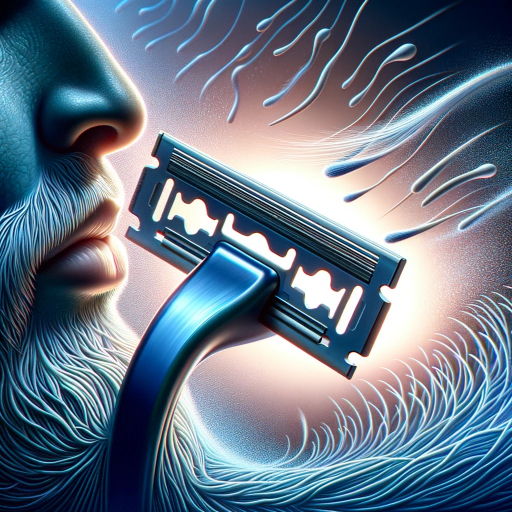
The choice between multi-blade and single-blade razors is not just about counting blades; it’s about understanding one’s skin and hair type, shaving preferences, and desired outcomes. While multi-blade razors might offer convenience and a seemingly closer shave, they can also lead to increased skin irritation and are not always the best choice for sensitive skin. On the other hand, single-blade razors, with their focus on technique and precision, can provide a more satisfying shave while being gentler on the skin.
For the thoughtful man focused on quality, luxury, and sustainability, the decision involves balancing these factors with personal values and grooming standards. The choice reflects not just a preference for a type of razor but an informed decision about personal care and environmental responsibility.
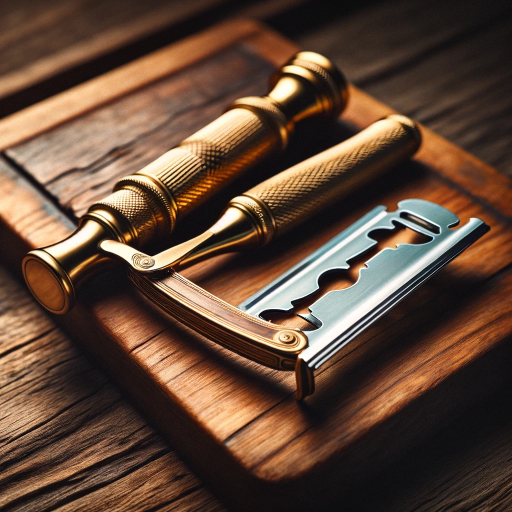
In the realm of personal grooming, luxury is often synonymous with customization and quality – attributes that resonate deeply with the modern man. For these astute men, a shave is more than a daily routine; it’s a ritual that reflects their personal style and sophistication. This luxury is embodied in the choice of shaving tools, particularly in razors that offer both aesthetic appeal and functional superiority.
The luxury shaving experience is about more than just the end result; it’s about the feel of the razor in hand, the balance and weight of it, and how it complements the user’s technique. Premium materials like brass and stainless steel not only enhance the durability and eco-friendliness of the razor but also add a sense of elegance and timelessness. These materials are chosen not just for their functionality but for their ability to transform a mundane object into a work of art.
But luxury in shaving isn’t just about material indulgence. It’s also about the experience and the journey. The process of selecting a razor, understanding its features, and mastering its use can be as satisfying as the shave itself. This journey is an integral part of the luxury experience, offering a sense of exclusivity and personalization that goes beyond the ordinary.
Multi-blade selection razors are at the forefront of combining luxury with customization. These razors cater to the unique preferences and needs of each individual, offering the ability to adjust blade exposure and angle. This level of customization is not just a feature; it’s a reflection of the user’s understanding of their skin and shaving requirements.
The flexibility of multi-blade selection razors is particularly appealing to those with varying skin types and shaving needs. Whether it’s adjusting the blade for a closer shave or reducing exposure to cater to sensitive skin, these razors put the control in the user’s hands. The precision that comes with this customization is not just about getting a closer shave; it’s about crafting a personal shaving experience that aligns with individual preferences and lifestyles.
For the high-income, environmentally conscious man, these adjustable razors represent the pinnacle of grooming tools. They offer a blend of luxury, personalization, and sustainability that is rarely found in standard shaving equipment. This combination of features makes them not just tools for shaving but symbols of personal care excellence and ecological responsibility.
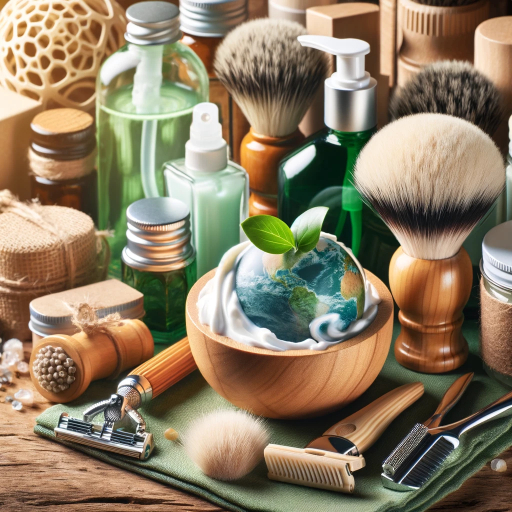
In a world increasingly conscious of its ecological footprint, the act of shaving can transcend the mundane and become a statement of environmental responsibility. The use of stainless steel razors epitomizes this shift. Unlike their disposable counterparts, stainless steel razors offer longevity and reduce waste, embodying a sustainable approach to personal grooming. However, the sustainability of shaving practices extends beyond the mere selection of a razor.
The manufacturing process of razors, often overlooked, plays a crucial role in environmental impact. Razors crafted from stainless steel not only promise durability but also involve a manufacturing process with a lower carbon footprint compared to plastic razors. This steel can be recycled, reducing resource depletion. By choosing razors made from such materials, consumers actively participate in a circular economy, where products are reused and recycled, minimizing waste.
Furthermore, the environmental impact of the lubricants and creams used in shaving is a topic seldom explored in depth. Traditional shaving foams and gels often contain aerosols and chemicals that can harm the environment. Opting for organic, natural shaving creams not only benefits the skin but also the planet. These products often come in eco-friendly packaging and are free from harmful chemicals, aligning with the ethos of eco-conscious grooming.
Sustainable shaving practices encompass more than just the choice of razor. They reflect a broader lifestyle choice embracing eco-conscious grooming. This includes the use of biodegradable or recyclable packaging for shaving products, reducing the plastic waste that often ends up in landfills and oceans. Moreover, the conservation of water during shaving is an aspect rarely highlighted. Turning off the tap while shaving can significantly reduce water usage, contributing to environmental conservation efforts.
The concept of ‘sustainable luxury’ in grooming is gaining traction among high-income consumers who value both quality and eco-responsibility. They are increasingly seeking products that offer a premium experience without compromising on environmental ethics. This shift is leading to innovations in the personal care industry, where luxury and sustainability are no longer seen as mutually exclusive but rather as complementary facets of a modern, conscientious lifestyle.
The journey towards sustainable shaving practices is not just about choosing the right razor. It encompasses a holistic approach to grooming that considers the environmental impact of every aspect, from product manufacturing to daily usage. By adopting these practices, individuals not only contribute to their personal well-being but also play a crucial role in preserving the planet for future generations.

Selecting the ideal razor for one’s skin type is a nuanced process, often overshadowed by broader discussions on razor types and features. It’s crucial to recognize that each skin type has unique needs which can significantly influence the shaving experience. For sensitive skin, a single-blade DE razor might be the best choice to reduce irritation and razor burn. The lesser blade exposure minimizes the risk of cuts and nicks, providing a gentler shave. Conversely, those with tougher skin might prefer multi-blade DE razors. The multiple blades work efficiently to cut through coarse hair with fewer passes, reducing the time spent shaving and minimizing skin discomfort.
However, this conventional wisdom doesn’t account for the individual variability in skin behavior. For example, someone with sensitive skin but thick hair might find a multi-blade DE razor, used with a light touch and proper technique, to be more effective and less irritating than a single-blade razor. This intersection of skin sensitivity and hair type is rarely discussed but is crucial for a personalized shaving experience.
The choice of razor among more affluent men is often influenced by factors beyond mere functionality. It encompasses a blend of quality, luxury, and increasingly, ecological responsibility. These consumers are turning towards customizable DE razors that offer an adjustable blade setting. This feature allows them to tailor the aggressiveness of the shave to their skin type and hair thickness, an aspect of luxury grooming that’s gaining importance.
Moreover, the material and craftsmanship of the razor hold significant value. High-income individuals often seek razors that are not just tools but pieces of art. Razors made from high-grade stainless steel with expertly crafted handles are not just about the shave; they represent a commitment to quality and sustainability. These razors are designed to last, challenging the disposable culture prevalent in the grooming industry.
Interestingly, the ritual of shaving is being redefined among this demographic. There’s a growing appreciation for the process itself – the preparation of the skin, the careful selection of shaving cream, and the methodical strokes of the razor. This ritualistic approach fosters a deeper connection with the act of shaving, transforming it from a daily chore into a mindful practice. It’s a trend that aligns with the ethos of self-care and environmental awareness, a combination that’s particularly appealing to the informed and affluent male audience.
In essence, choosing the right razor for one’s skin type in the high-income bracket goes beyond mere functionality. It involves a holistic consideration of personal skin needs, luxury, craftsmanship, and environmental consciousness, encapsulating a lifestyle choice rather than a simple grooming decision.
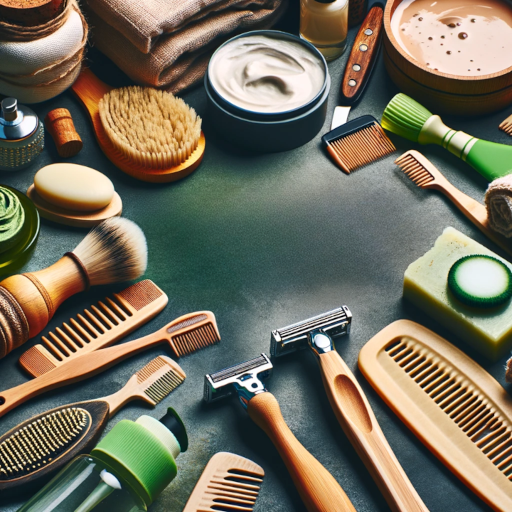
In the landscape of modern grooming, the choice of a razor transcends mere functionality; it reflects a nuanced understanding of personal care, environmental stewardship, and an appreciation for the art of shaving. The discussion around DE razors, particularly their blade count and suitability for different skin types, offers a window into a deeper narrative—one that intertwines the elegance of tradition with the imperatives of a sustainable future.
This exploration has revealed that the realm of shaving is not just about cutting hair but is intrinsically linked to personal identity and ecological consciousness. The resurgence of DE razors, especially those fashioned from sustainable materials like stainless steel, is not a mere trend but a statement of values. It signifies a shift away from disposable culture, embracing quality, durability, and responsibility.
The intricate relationship between blade count and skin type highlights the personalized nature of shaving. Every individual’s skin is a unique canvas, with its distinct texture and contours, requiring a tailored approach to grooming. The luxury of adjustable blade razors in this context is not just a feature but a tool for personalization, empowering users to find their perfect shave while reducing environmental impact.
Furthermore, the move towards sustainable shaving solutions among high-income individuals is indicative of a broader cultural shift. It reflects a growing awareness that luxury and sustainability need not be at odds but can coexist, creating products and experiences that are both indulgent and conscientious. This convergence of quality, eco-friendliness, and personalization is shaping a new paradigm in men’s grooming, where the razor becomes more than a tool—it becomes a symbol of a lifestyle choice that values both self-care and the health of the planet.
As we navigate this evolving landscape, the conversation around shaving, particularly the nuances of blade count and skin type, serves as a microcosm of a larger dialogue. It’s a dialogue about how we, as individuals and as a society, approach our daily rituals, the products we choose, and the impact of those choices on the world around us. In this sense, each stroke of the razor is not just shaping our appearance but is also carving out our role in the sustainable future of our planet.